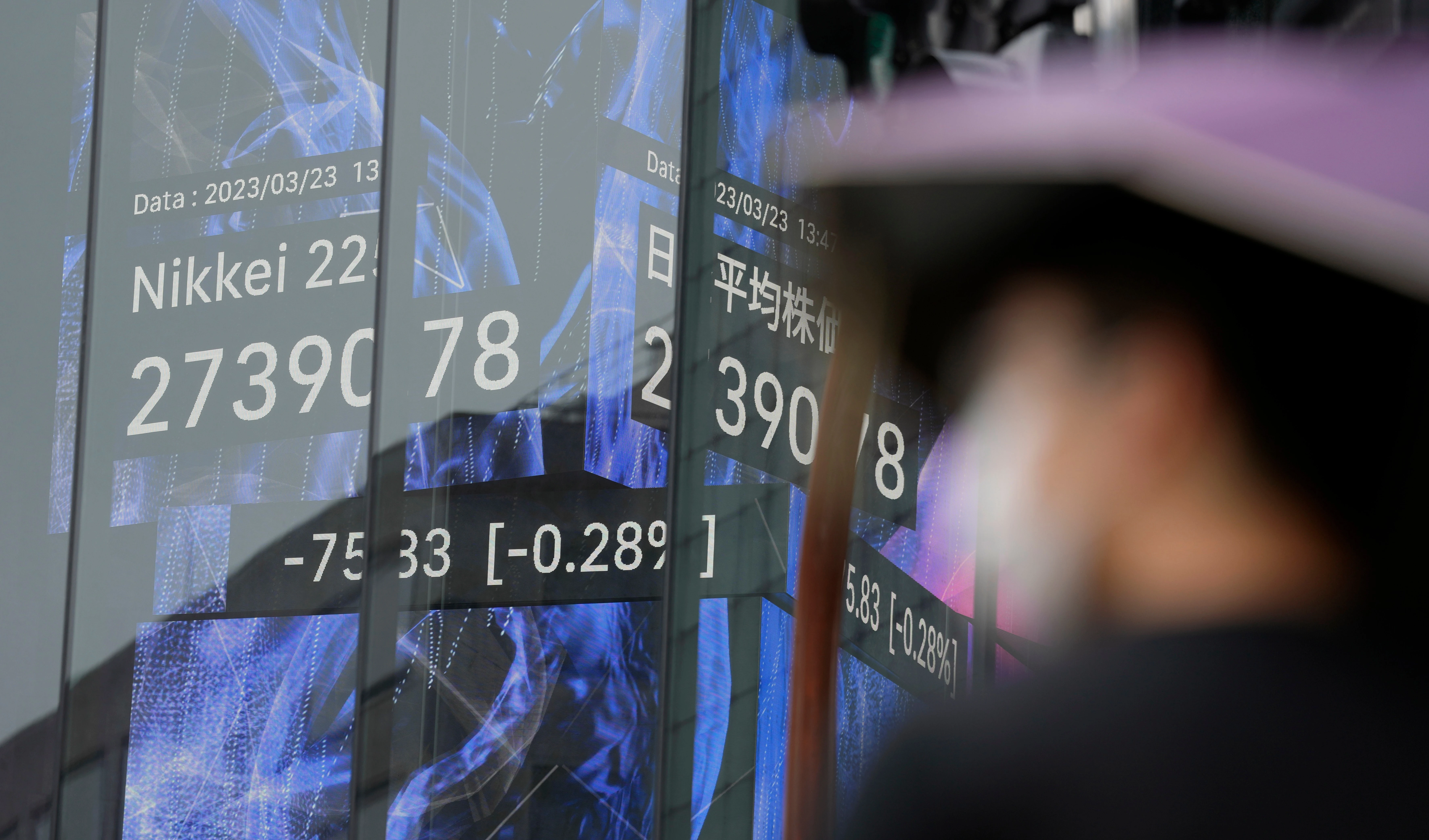China grants US tariff exemptions to limit trade war impact
China’s tariff exemptions on select US imports, along with calls for businesses to identify eligible goods, signal easing trade tensions and offer relief to both US and Chinese industries.
-
 A view of ships under construction at the Jinling Shipyard in Nanjing in eastern China's Jiangsu province, on April 11, 2025. (Chinatopix/AP)
A view of ships under construction at the Jinling Shipyard in Nanjing in eastern China's Jiangsu province, on April 11, 2025. (Chinatopix/AP)
China has granted exemptions on US imports from its 125% tariff, and is asking businesses to identify eligible goods in an apparent attempt to ease the economic impact of the US-China trade war.
As a result, the U.S. dollar has risen slightly, and equity markets in Hong Kong and Japan have gained.
This move follows a shift in tone from Washington, where officials are said to be evaluating a significant tariff cut on Chinese imports, possibly scaling back duties to somewhere between 50% and 65%. Washington has acknowledged that the trade stand-off with China is economically unsustainable and has already offered tariff exemptions on certain electronic goods.
A task force from China's Ministry of Commerce is gathering potential items for tariff exemptions and requesting companies to provide their own submissions, according to a source familiar with the effort.
"The Chinese government, for example, has been asking our companies what sort of things are you importing to China from the US that you cannot find anywhere else and so would shut down your supply chain," American Chamber of Commerce in China President Michael Hart said on Friday.
According to Hart, several companies within the US business group reported importing goods last week without the newly imposed tariffs. The CEO of French aerospace company Safran confirmed that China had granted tariff exemptions on "certain aerospace parts", including engines and landing gear. Additionally, China’s Commerce Ministry held a meeting with over 80 foreign businesses and chambers of commerce to address the effects of US tariffs on investments and operations in China.
Economic impact
Beijing's potential tariff exemptions could reduce costs for various industries in China, from pharmaceuticals to airlines, and make imports of items like semiconductors and petrochemicals more affordable. The European Union Chamber of Commerce in China has raised the matter of tariff exemptions with the Ministry of Commerce and is awaiting a reply.
This could also ease pressure on US exports as the Trump administration appears open to negotiation.
Earlier this month, the China Semiconductor Industry Association announced a major revision to its rules regarding the country of origin for semiconductors, now requiring that the location of the manufacturing facility, not the site of assembly, will determine a product’s origin. If a chip is made in the US, China will now clearly label it as a US product. That makes it easier for China to target US chips with extra taxes, restrictions, or other rules, especially during tensions between the two countries.
"Many of our member companies are significantly impacted by the tariffs on critical components imported from the US," President of the European Union Chamber of Commerce in China, Jens Eskelund, said.
A list of 131 product categories under consideration for tariff exemptions was circulating on Chinese social media and among businesses and trade groups on Friday, reportedly including items ranging from vaccines and chemicals to jet engines. According to Huatai Securities, the list represents $45 billion worth of imports to China last year.
As China entered the trade war, it faced rising unemployment, deflationary pressures, and concerns that a backlog of unsold exports could further depress domestic prices. Despite a nearly $1 trillion trade surplus in 2024, China remains dependent on the US for key imports like ethane, a petrochemical used in plastics, and some drugs.
Presently, China represents about 27% of global industrial output, according to data estimated by the United Nations, up from 24% in 2018. Therefore, forecasts indicate that by 2030, China's share in industry will rise to 45%, a level of dominance unmatched since the height of manufacturing in the US after World War II or the UK in the 19th century.
On the other hand, the US budget deficit surged to $711 billion in the October–December quarter, a 39% increase from the previous year, driven by an 11% rise in spending to a record $1.8 trillion and a drop in tax revenues, according to Treasury Department data released in January.

 4 Min Read
4 Min Read










